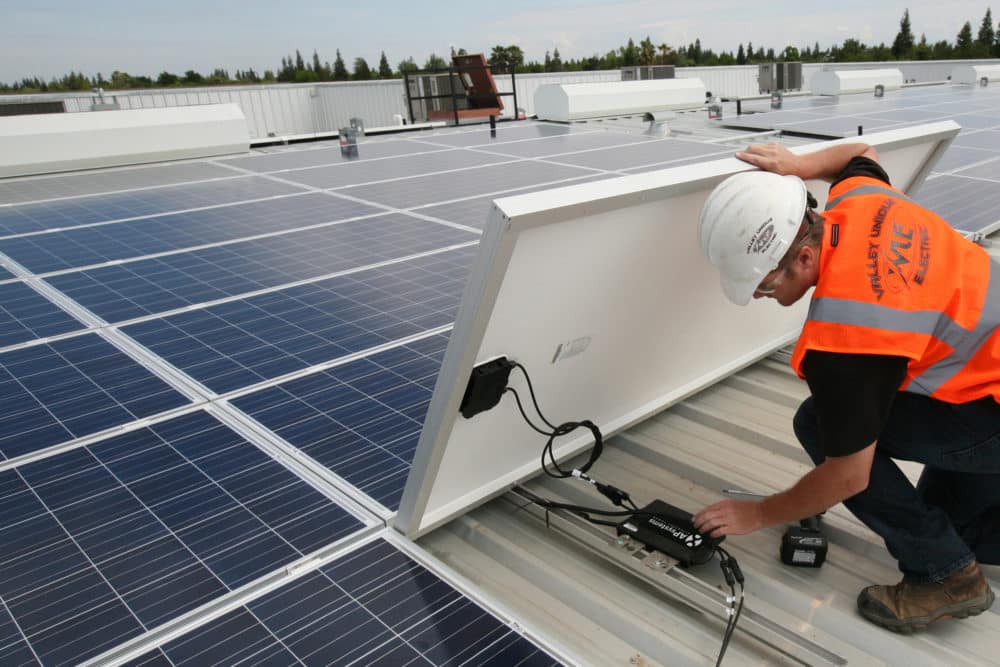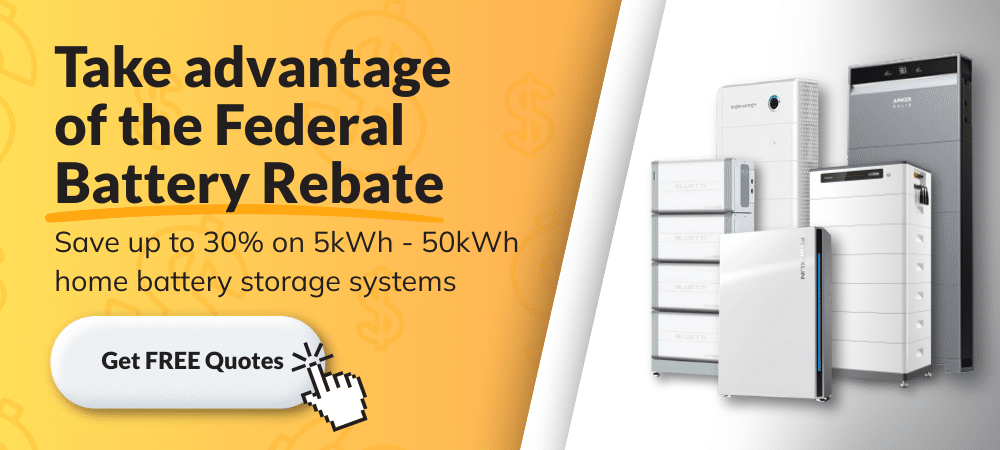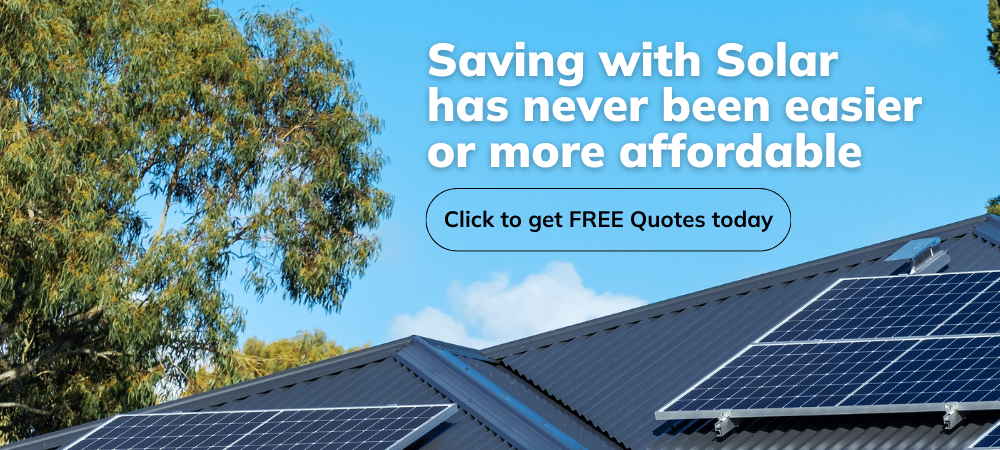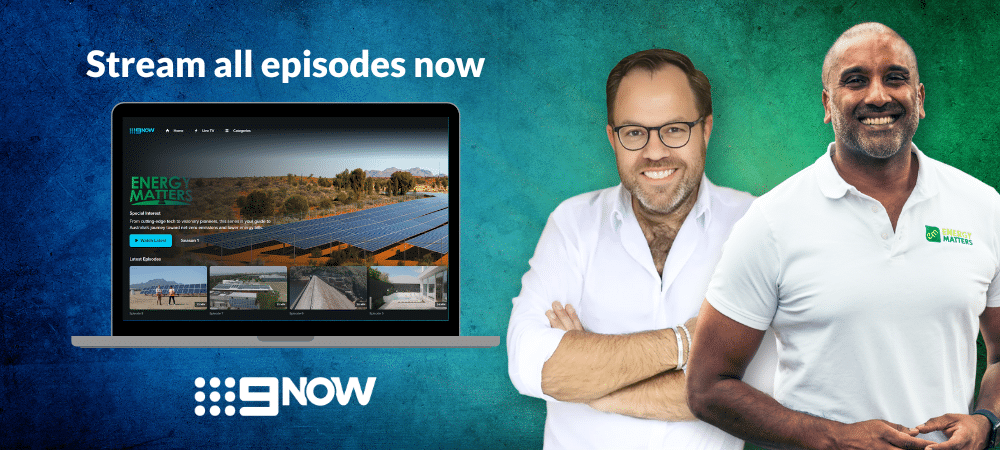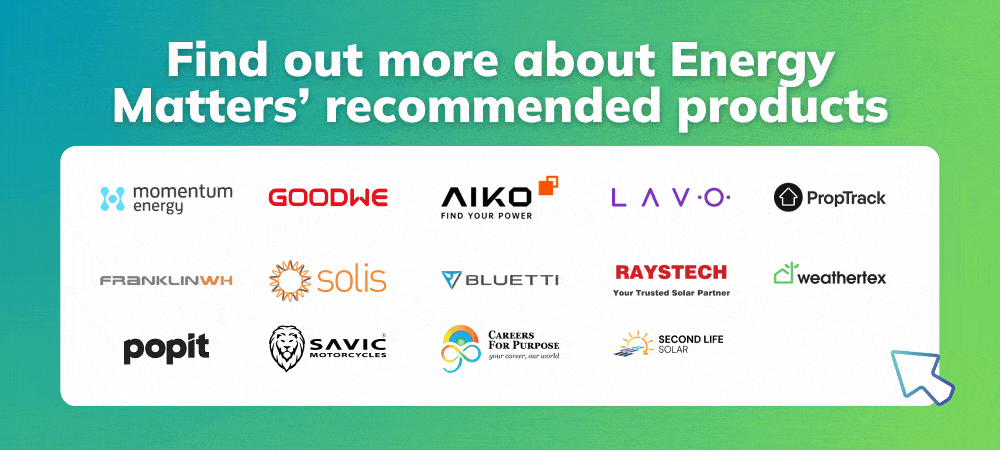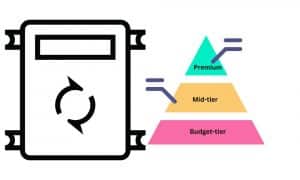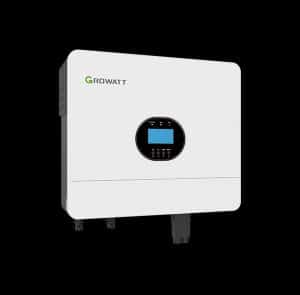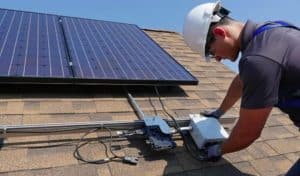Updated on 18 January 2025
In today’s rapidly evolving solar energy technology, microinverters are indispensable components, driving efficiency, reliability, and flexibility in solar power systems.
Whether you’re a homeowner, business owner, or solar enthusiast, this guide aims to provide comprehensive insights into the latest advancements, applications, and considerations surrounding microinverters in 2025.
This guide will help you unlock the full potential of microinverters in harnessing clean, renewable energy for a sustainable future, from understanding their operation principles to optimising their performance.
Introduction to microinverters
Microinverters have emerged as a popular choice for homeowners and business owners in Australia seeking to harness solar energy.
What are microinverters?
Microinverters work at an individual panel level, converting each panel’s DC (direct current) electricity generated into AC (alternating current) electricity usable by households and businesses.
Think of each solar panel on your rooftop as a mini power station—optimising its output independently of shading, debris, or degradation. Decentralising the conversion process ensures maximum energy production from each panel. This results in higher overall system efficiency and greater energy harvest, specifically where panels are subject to variable conditions throughout the day.
Aside from efficiency, microinverters enhance safety by minimising the risk of system-wide shutdown due to issues with a single panel. It also facilitates easier system monitoring and maintenance. It becomes easier to identify performance issues with a microinverter, which helps in better optimisation of solar systems.
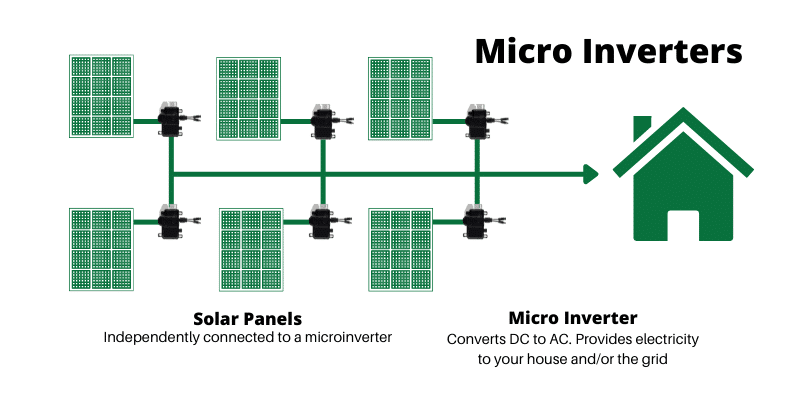
Key features of microinverters
- Individual panel optimisation: Each microinverter operates independently, maximising the output of its corresponding solar panel.
- Modular design: Microinverters allow for easy system expansion, accommodating additional solar panels without significant redesigns.
- Real-time monitoring: Advanced monitoring capabilities enable homeowners to track the performance of each panel.
How microinverters work
Microinverters convert DC electricity produced by individual solar panels into usable AC electricity. Unlike traditional string inverters, which manage multiple panels collectively, microinverters operate at the level of each panel, allowing for independent optimisation of energy output.
Each microinverter is installed on or near its respective solar panel and performs the conversion process directly at the source of generation. This means that the DC electricity generated by each panel is immediately converted into AC electricity, minimising power losses associated with long cable runs and ensuring optimal panel performance.
Microinverters vs. string inverters vs. power optimisers: A comparative analysis
Microinverters
- Best for: Systems with shading issues or panels installed at varying angles.
- Pros: Panel-level optimisation, enhanced reliability, and modular scalability.
- Cons: Higher upfront cost.
String inverters
- Best for: Large systems with consistent sunlight exposure.
- Pros: Lower cost and proven technology.
- Cons: System performance can be impacted by a single panel’s inefficiency.
Power optimisers
- Best for: Systems where panel-level optimisation is desired without full microinverter functionality.
- Pros: Lower cost than microinverters, improved energy output.
- Cons: Still reliant on a central inverter.
Microinverters and string inverters represent two distinct approaches to managing solar energy conversion.
Microinverters, installed at the level of individual panels, offer advantages such as independent optimisation, reduced power losses, and enhanced monitoring capabilities. They excel in scenarios with shading or panel degradation, ensuring each panel operates at peak efficiency. However, they can be costlier upfront and may require more complex installation.
In contrast, string inverters manage multiple panels collectively, typically placed in a central location. They are often more cost-effective initially and simpler to install. However, they are susceptible to performance issues caused by shading or panel mismatch, and their centralised nature can lead to power losses and reduced system efficiency.
Ultimately, the choice between micro and string inverters depends on system size, budget, shading conditions, and desired level of monitoring and optimisation.
To explore which solution best meets your requirements and budget, consider contacting Energy Matters for FREE solar quotes tailored to your specific circumstances.
Check our page to learn more and compare string inverters, microinverters, and power optimisers.
The advantages of using microinverters
- Enhanced efficiency: Microinverters optimise energy production at the individual panel level, minimising power losses associated with shading or panel degradation. This leads to higher overall system efficiency compared to traditional string inverters.
- Flexibility in system design: Microinverters offer greater flexibility in system design, allowing for installations in challenging environments where shading or panel orientation varies. This flexibility enables optimal panel placement and maximises energy production potential.
- Improved safety: Microinverters minimise the risk of system-wide shutdown due to issues with a single panel. Each panel operates independently, enhancing system safety and reliability.
Potential drawbacks and considerations
- Higher initial cost: Microinverter systems typically have a higher upfront cost than traditional string inverter systems. This cost can be a significant consideration for budget-conscious consumers or larger installations.
- Increased complexity in maintenance: While microinverters offer enhanced monitoring capabilities, their decentralised nature can increase complexity during maintenance and troubleshooting. Identifying and addressing individual panel-level issues may require specialised skills and tools.
- Reliability concerns: Some users have raised concerns about the long-term reliability of microinverters, particularly regarding potential failure rates over time. While technological advancements have improved reliability, some consumers still consider it a consideration.
Optimising your solar setup with microinverters
Strategic panel placement is key to maximising the benefits of microinverters in your solar energy system. Take advantage of their capability to optimise energy production at the individual panel level by positioning panels in areas with maximum sunlight exposure and minimal shading throughout the day. This ensures each panel operates at peak efficiency, producing higher energy output.
Regular monitoring and maintenance are essential for ensuring the continued performance of your solar setup. Utilise the advanced monitoring features provided by microinverters to track the performance of each panel. This allows for early detection of any issues or underperforming panels, enabling prompt maintenance to address any issues and maintain optimal system performance.
When planning your solar energy system, consider its potential for expansion and scalability. Choose microinverters that are compatible with additional panels. This will allow you to easily expand your system as energy needs evolve or as additional space becomes available for solar installations. This flexibility ensures your system can grow with your energy requirements over time.
Professional installation is crucial for the proper functioning of microinverters. Ensure you hire qualified professionals with experience working with these systems to install your microinverters correctly.
Proper installation is critical for maximising the efficiency and reliability of your solar energy setup and avoiding potential issues down the line.
Consider your energy needs and choose the appropriate system size when incorporating microinverters into your solar setup. A well-sized system ensures you generate enough energy to meet your household’s electricity demands while maximising the benefits of microinverter technology.
For personalised assistance and guidance in choosing the right solar solution for your home, consider getting FREE solar quotes from Energy Matters.
Leading microinverter brands in Australia 2025
Several reputable brands dominate the microinverter market in Australia:
- Enphase: Enphase is a leading brand with a strong market presence, known for its innovative technology and comprehensive monitoring platform.
- SolarEdge: Offers a range of DC optimisers that work with their string inverters, providing many of the same benefits as microinverters.
- APSystems: A well-regarded brand offering competitive pricing and reliable performance.
- Hoymiles: A growing market player known for its compact and efficient microinverters.
- SMA Solar Technology: Innovative hybrid solutions combining string inverters and module-level optimisation.
The future of microinverters in solar technology
As technology continues to evolve, the future of microinverters in solar technology appears promising, with several potential developments and innovations on the horizon.
- Enhanced efficiency: Future advancements may focus on improving the efficiency of microinverters further, allowing for greater energy production from solar panels. This could involve innovations in power electronics and optimisation algorithms to squeeze out every possible watt of electricity from each panel.
- Integration with energy storage: As energy storage systems, such as batteries, become increasingly prevalent in solar installations, future microinverters may integrate seamlessly with these storage solutions. This integration could enable homeowners to store excess energy generated during the day for use during peak demand periods or when sunlight is scarce.
- Smart grid integration: Microinverters with advanced communication capabilities may play a crucial role in developing smart grid systems. These inverters could communicate with utility providers to help balance supply and demand, optimise energy distribution, and improve grid resilience and reliability.
- Artificial intelligence and predictive maintenance: AI-driven algorithms could change how microinverters are monitored and maintained. Predictive maintenance algorithms could anticipate and prevent potential issues before they occur, minimising downtime and maximising system reliability.
- Cost reduction: Continued advancements in manufacturing processes and materials could reduce the cost of microinverters, making them more accessible to a wider range of consumers. Lower costs could further accelerate the adoption of solar energy and microinverter technology worldwide.
Are microinverters worth the investment?
While microinverters have a higher initial cost compared to string inverters, their long-term benefits often outweigh the expense. The improved energy output, system reliability, and flexibility make them a worthwhile investment for many Australian homeowners and businesses. Additionally, technological advancements and increasing adoption rates have steadily reduced their cost over the years.
Choosing the right micro inverter for your solar system
Selecting the optimal microinverter for your solar energy system involves carefully considering several key factors. Firstly, assess the size of your system and whether it’s a residential, commercial, or industrial installation.
Compact microinverters with advanced monitoring features may be preferable for smaller residential systems. In comparison, larger commercial or industrial systems may benefit from higher-capacity models capable of handling greater loads.
Additionally, consider your installation site’s geographic location and environmental conditions. Microinverters designed to withstand harsh climates or extreme temperatures are essential for ensuring long-term reliability and performance. Finally, compatibility with your chosen solar panels and monitoring systems is crucial for seamless integration and efficient operation.
By evaluating these factors and consulting with solar professionals, you can choose the right microinverter to optimise your solar energy system’s efficiency and reliability.
When evaluating microinverters for your solar energy system, it’s essential to consider various factors like system size, installation type, and environmental conditions. Enphase is one of the leading microinverter brands for your home or business today. With advanced technology ensuring optimal energy production, reliability, and seamless integration, Enphase inverters empower you to maximise solar energy like never before.
Energy Matters offers FREE solar quotes tailored to your needs, helping you make optimal efficiency and reliability decisions.
Conclusion: Why microinverters could be your best choice
Microinverters offer unparalleled advantages in optimising solar energy production, including individual panel optimisation, enhanced monitoring capabilities, and increased system flexibility. Their decentralised operation minimises power losses and improves overall system reliability, making them an attractive option for residential and commercial solar installations.
With the potential for future advancements and innovations, microinverters continue to stand out as a leading choice for maximising solar energy systems’ efficiency and performance.
Energy Matters has over 18 years of experience in the solar industry and has helped over 40,000 Australian households in their journey to energy independence.
Complete our quick Solar Quote Quiz to receive up to 3 FREE solar quotes from trusted local installers – it’ll only take you a few minutes and is completely obligation-free.











